Recent Posts
How the SERVPRO® Emergency Ready Plan Benefits Business Owners
3/11/2025 (Permalink)
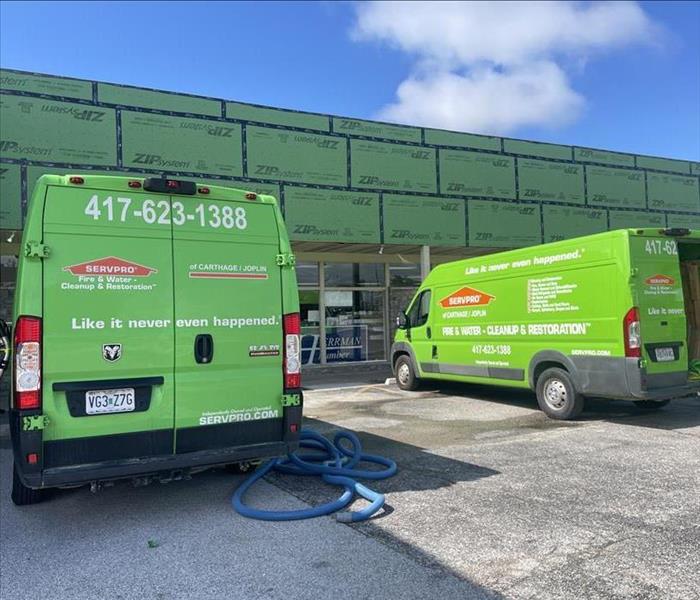 Our team will work with you to gather the necessary information and develop a tailored plan that meets your business's unique needs.
Our team will work with you to gather the necessary information and develop a tailored plan that meets your business's unique needs.
Disasters can strike without warning, leaving businesses vulnerable to significant operational disruptions. According to FEMA, approximately 25% of businesses do not reopen after a disaster. This highlights the importance of having a proactive plan in place to protect your business from unexpected events.
Our Emergency Ready Plan (ERP) is designed to help business owners prepare for the unexpected, ensuring a quick and efficient response when emergencies occur. By having a solid plan, you can minimize damage, reduce downtime, and increase the likelihood of staying in business after a disaster.
What is the SERVPRO® Emergency Ready Plan?
The ERP is a comprehensive tool that assists businesses in developing a proactive strategy for disaster preparedness. By creating a detailed profile of your facility, the ERP facilitates quick access to critical information needed during an emergency, allowing for immediate action to minimize damage and downtime.
Key Advantages of the ERP:
- No-Cost Assessment: SERVPRO of Carthage/Joplin offers the ERP assessment at no charge, providing significant value without financial burden.
- Concise Profile Document: The ERP compiles essential information such as emergency contacts, shut-off valve locations, and priority areas into a single, easily accessible document.
- Guided Recovery Process: Having a well-structured plan in place aids in a faster return to normal operations by outlining clear steps to follow post-disaster.
- Established Partnership: The ERP designates SERVPRO of Carthage/Joplin as your dedicated disaster mitigation and restoration provider, ensuring prompt and professional assistance when needed.
- Streamlined Authorization: By identifying key decision-makers within your organization, the ERP expedites the initiation of mitigation work, saving both time and resources.
Why Choose SERVPRO of Carthage/Joplin?
SERVPRO of Carthage/Joplin has been a trusted partner for businesses in the Carthage and Joplin, MO areas, providing expert restoration services and helping them recover from unexpected challenges.
Our team of highly trained professionals is equipped to handle a wide range of restoration needs, ensuring your business is prepared and resilient in the face of disasters.
Getting Started with Your ERP
Implementing the SERVPRO Emergency Ready Plan is straightforward. Contact SERVPRO of Carthage/Joplin to schedule your no-cost assessment. Our team will work with you to gather the necessary information and develop a tailored plan that meets your business's unique needs. By taking this step, you're investing in the longevity and resilience of your business.
In conclusion, the SERVPRO Emergency Ready Plan offers business owners a strategic advantage in disaster preparedness. By partnering with SERVPRO of Carthage/Joplin, you can ensure that your business is equipped to handle emergencies effectively, minimizing downtime and protecting your operations.
Why Air Quality Testing After a Fire Is So Important
12/5/2024 (Permalink)
When a fire happens in your home, the damage can go beyond what you see. While it's easy to focus on burned walls, soot-covered floors, and other visible damage, the air inside your home may be full of hidden dangers. After the flames are out, smoke, soot, and harmful chemicals can stay in the air. Here are some details on why you need air quality testing and how it works.
Why You Need Air Quality Testing After a Fire
Even after a fire is put out, tiny particles of smoke and soot stay in the air. These can settle into carpets, walls, and furniture, and even enter your lungs. If not properly removed, they can continue to linger in your home, making the air unsafe.
1. Smoke and Soot Stick Around
Smoke and soot are major concerns after a fire. According to the Environmental Protection Agency, soot particles are often less than 2.5 micrometers in diameter. That means they can float around in the air and cling to surfaces without you even realizing it. This makes air quality testing an important step in ensuring your home is safe to live in again.
2. Chemical Contaminants from Burning Materials
During a fire, things in your home like plastic, paint, and insulation can release harmful chemicals when they burn. These chemicals, such as carbon monoxide or formaldehyde, can hang around in the air long after the fire is out. Air quality testing helps find these invisible chemicals so professionals can remove them and restore the air in your home.
How Air Quality Testing Works
When professionals test the air after a fire, they’re looking for harmful particles like smoke, soot, and toxic chemicals. Here’s how the process works:
1. Assessing the Damage
First, a technician will inspect your home to find areas where air quality testing is most needed. This usually includes rooms close to the fire or places where smoke has traveled through air vents.
2. Air Sampling
Next, air samples are taken with special equipment that checks for pollutants and particles in the air. This helps experts figure out exactly what contaminants are present and what needs to be done to clean them up.
3. Cleaning the Air
Once the air has been tested and the results are analyzed, professionals will create a plan to clean the air. This can include using air scrubbers, cleaning air ducts, or adding air purifiers to remove harmful particles and improve air quality.
A fire can leave behind more than just visible damage. Smoke, soot, and harmful chemicals can hang in the air and affect the safety of your home. Air quality testing is a key step in finding and removing these dangerous particles. At SERVPRO of Carthage/Joplin, we have the tools and expertise to make sure your home’s air is safe to breathe.
Why Mold Disclosure Is Important for Home Sellers and Buyers
11/10/2024 (Permalink)
 When it comes to buying or selling a home, being honest about mold benefits everyone involved.
When it comes to buying or selling a home, being honest about mold benefits everyone involved.
Buying or selling a home is a big decision, and transparency is essential throughout the process. One key issue that can’t be ignored is mold. Mold can affect a property’s value and integrity, which is why disclosing any mold problems is crucial for both sellers and buyers. Whether you're selling or buying, understanding the importance of mold disclosure can help protect your investment and avoid unwanted surprises.
The Legal Obligation to Disclose Mold
In Missouri, sellers are legally required to disclose any known mold or water damage issues in their homes. Even if mold disclosure isn’t legally required where you live, it’s always a good idea to be upfront about any mold problems. Mold can cause damage to a home’s structure, which can significantly reduce its value. Failing to disclose mold could lead to legal troubles down the road.
Protecting the Buyer’s Investment
For buyers, mold disclosure is about protecting your investment. Mold can be expensive to clean up, and if it’s not disclosed, you could end up facing unexpected expenses after closing. Mold inspections are common during the home-buying process. If mold is discovered early, you can negotiate repairs or a lower purchase price to cover the cost of remediation.
How Mold Affects Property Value
Mold can reduce the value of a home, especially if it’s left untreated. Many potential buyers may be wary of purchasing a property with a mold history. For sellers, disclosing mold upfront helps build trust with potential buyers, making negotiations smoother and preventing last-minute deal-breakers.
Reducing Negotiation Conflicts
When mold is disclosed early in the process, it can lead to more productive negotiations. Sellers can offer to fix the issue or adjust the price to accommodate the cost of remediation. For buyers, knowing about the mold issue ahead of time allows them to make an informed decision and avoid feeling blindsided.
Questions Buyers Should Ask About Mold
If mold is disclosed during a home purchase, buyers should be proactive and ask these important questions:
- How was the mold discovered?
- What remediation steps have been taken?
- Is there documentation or warranties related to the mold cleanup?
Asking these questions helps ensure that the mold problem has been addressed and won’t become a recurring issue.
How Sellers Can Prepare for Mold Disclosure
Sellers should be prepared to handle mold disclosure by addressing any issues before listing their home. Hiring a professional mold inspector can help you identify any hidden mold problems and take care of them before potential buyers see them. Having professional documentation on hand gives buyers peace of mind and shows that you’ve taken steps to resolve the problem.
Benefits of Professional Mold Remediation
If mold is found, professional remediation is the best way to ensure the issue is properly handled. A trusted service like SERVPRO® can assess and remediate the mold, giving you the documentation you need to assure buyers that the problem has been thoroughly dealt with.
Honesty Benefits Both Parties
When it comes to buying or selling a home, being honest about mold benefits everyone involved. For sellers, disclosing mold builds trust and helps avoid legal issues. For buyers, mold disclosure provides peace of mind and allows for better decision-making.
If you’re selling a home and need mold remediation or if you’re buying and want a mold inspection, SERVPRO of Carthage/Joplin is here to help. Our team of experts will ensure the mold is handled professionally, so you can focus on the sale or purchase with confidence.
Safe Disposal of Water-Damaged Materials and Debris: Essential Tips from SERVPRO®
10/8/2024 (Permalink)
Water damage can leave behind a trail of destruction, affecting everything from personal belongings to structural components of your home. Once the immediate water has been dealt with, the next critical step is the safe disposal of water-damaged materials and debris. Proper disposal is essential to prevent further damage and environmental impact. In this blog, we'll discuss the steps for safely disposing of water-damaged materials and debris, with insights from SERVPRO®, a leader in water damage restoration.
Assessing the Damage
The first step in dealing with water-damaged materials is a thorough assessment. SERVPRO professionals recommend identifying and categorizing the items affected by water damage. This includes determining what can be salvaged, what needs professional restoration, and what must be discarded.
Safety is paramount when handling water-damaged materials. Wear protective gear such as gloves, masks, and goggles to protect yourself from contaminants and mold spores. Ensure the area is well-ventilated and avoid direct contact with contaminated water and materials.
Segregate and Sort Materials
Organize water-damaged materials into categories
- Salvageable Items: Items that can be cleaned, dried, and restored. SERVPRO uses advanced cleaning and drying techniques to salvage as many items as possible.
- Non-Salvageable Items: Items that are too damaged to be restored, such as soaked carpets, insulation, drywall, and certain types of furniture.
- Hazardous Materials: Items that may pose a health risk, such as those contaminated with sewage or chemicals.
Proper Disposal of Non-Salvageable Items: For non-salvageable items, follow local regulations and guidelines for disposal. This may involve:
- Large Debris: Dispose of large items such as furniture, carpets, and drywall according to municipal guidelines. Some areas may require special disposal services or permits.
- Electronics and Appliances: Water-damaged electronics and appliances should be taken to designated recycling centers or e-waste disposal sites.
- Hazardous Waste: Items contaminated with hazardous substances should be handled according to local hazardous waste disposal regulations. Contact local waste management services for specific instructions.
Managing Mold-Infested Materials
Mold growth is a common consequence of water damage. Mold-infested materials, such as drywall, insulation, and fabric, should be carefully removed and sealed in plastic bags to prevent the spread of spores. SERVPRO professionals use specialized techniques to handle and dispose of mold-contaminated materials safely.
Documenting the disposal process is crucial for insurance purposes. Take photos and keep records of all disposed items, including their condition and the reason for disposal. SERVPRO can assist with comprehensive documentation to support your insurance claims.
After removing water-damaged materials, thoroughly clean and sanitize the affected area to eliminate any remaining contaminants. SERVPRO uses industry-leading cleaning products and equipment to ensure your home is safe and free from harmful pathogens. Once the debris is cleared and the area is sanitized, the restoration process can begin. SERVPRO provides comprehensive restoration services, including drying, cleaning, and rebuilding to restore your home to its pre-damage condition.
Safe disposal of water-damaged materials and debris is a critical step in the recovery process following water damage. By following these guidelines and enlisting the help of professionals like SERVPRO of Carthage/Joplin, you can ensure that the disposal process is handled safely and efficiently. Remember, when in doubt, trust the experts at SERVPRO to guide you through every step of the water damage restoration process.
Understanding the Different Types of Floods and How to Prepare
9/18/2024 (Permalink)
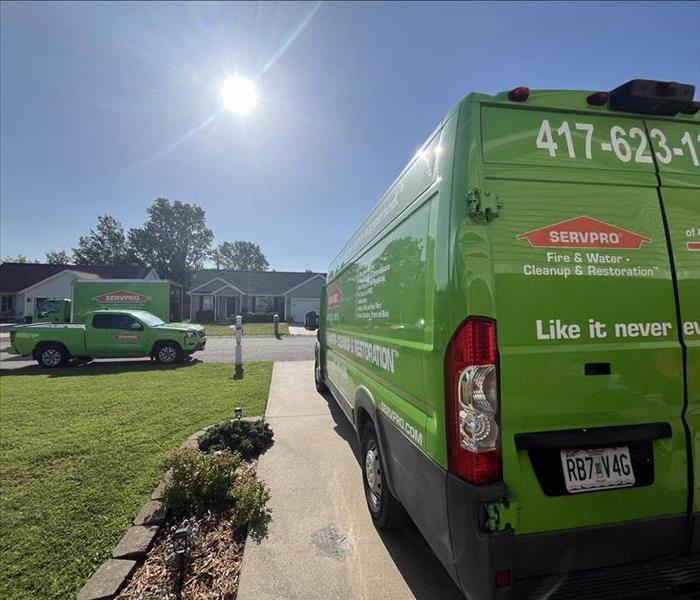 Our team is ready to help you recover quickly and safely. Just give us a call!
Our team is ready to help you recover quickly and safely. Just give us a call!
Floods are among the most common and devastating natural disasters, capable of causing significant damage to homes, businesses, and infrastructure. For residents of Carthage, MO, understanding the different types of floods and their unique characteristics can help in better preparation and response. This blog will explore the various types of floods and provide valuable information on how each can impact your community.
Types of Floods
Floods come in several forms, each with its causes and consequences. By knowing the different types of floods, you can better understand how to prepare for and respond to these events. Here are the main types of floods you should be aware of:
Flash Floods
Flash floods are sudden and intense floods that occur within a short period, typically within six hours of heavy rainfall or other water release. These floods can result from severe thunderstorms, hurricanes, or dam failures. Flash floods are particularly dangerous due to their rapid onset and powerful water currents, which can sweep away vehicles, uproot trees, and cause substantial property damage. According to the National Weather Service, flash floods are the leading cause of weather-related deaths in the U.S.
River Floods
River floods happen when rivers overflow their banks due to prolonged heavy rainfall, snowmelt, or dam release. These floods can develop slowly, giving residents time to prepare, but they can still cause extensive damage over large areas. River floods can submerge entire neighborhoods, disrupt transportation, and impact local economies. The Mississippi River, for example, is notorious for its periodic flooding, which has shaped the surrounding regions' landscapes and communities.
Coastal Floods
Coastal floods happen along coastlines and are usually caused by storm surges, high tides, or tsunamis. Storm surges, often associated with hurricanes, push seawater onto land, inundating coastal areas. Coastal floods can erode beaches, damage coastal infrastructure, and contaminate freshwater supplies with saltwater. Areas along the Gulf of Mexico and the Atlantic Ocean are particularly vulnerable to coastal flooding during hurricane season.
Urban Floods
Urban floods occur in city areas where the drainage systems are overwhelmed by heavy rainfall. These floods can happen quickly, especially in places with a lot of impervious surfaces like roads and buildings that prevent water from seeping into the ground. Urban floods can disrupt traffic, damage buildings, and create hazardous conditions for residents. Cities like Houston and New York have experienced severe urban flooding in recent years, highlighting the need for improved urban planning and drainage systems.
Pluvial (Surface) Floods
Pluvial floods, also known as surface water floods, occur when heavy rainfall creates a flood independent of an overflowing water body. This type of flooding can happen in both urban and rural areas and is often caused by intense rain that saturates the ground, leading to water pooling in low-lying areas. Pluvial floods can damage crops, overwhelm drainage systems, and flood properties.
Understanding Flood Risks in Carthage, MO
Carthage, MO, is susceptible to various types of flooding due to its geographical location and weather patterns. Understanding the specific flood risks in your area is crucial for effective preparation and response.
Preparation Tips
- Stay Informed: Keep an eye on weather forecasts and river levels, especially during heavy rainfall or storms.
- Create an Emergency Plan: Have a plan ready for evacuation and communication with family members.
- Protect Your Property: Use sandbags and other barriers to shield your home from floodwaters. Ensure your drainage systems are clear and functioning properly.
- Consider Flood Insurance: Standard homeowner’s insurance policies often do not cover flood damage. Consider purchasing flood insurance through the National Flood Insurance Program (NFIP).
Be Prepared and Stay Safe
Floods can happen in various ways, each with its own set of challenges and impacts. By understanding the different types of floods and how they can affect Carthage, MO, you can better prepare and protect your home and family. If you experience flood damage, contact SERVPRO of Carthage/Joplin for expert restoration services. Our team is ready to help you recover quickly and safely.
What Are the Different Stages of Fire Damage Restoration?
8/14/2024 (Permalink)
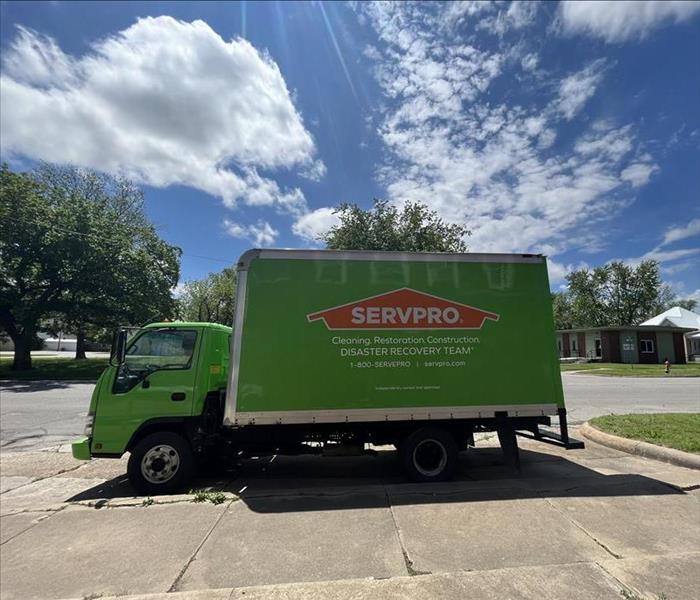 If you need professional fire damage restoration services, contact our SERVPRO of Carthage/Joplin team today.
If you need professional fire damage restoration services, contact our SERVPRO of Carthage/Joplin team today.
Experiencing a fire in your home or business is devastating. The aftermath can be overwhelming, but understanding the fire damage restoration process can provide clarity and reassurance. This blog will guide you through the different stages of fire damage restoration and explain how each step contributes to restoring your property to its pre-fire condition.
Stage 1: Emergency Contact and Assessment
The first stage begins when you contact a professional fire damage restoration company. Immediate action is crucial to minimize further damage. SERVPRO of Carthage/Joplin offers 24/7 emergency services to quickly respond to your call.
Once on-site, the restoration team will conduct a thorough assessment of the damage. This involves inspecting the affected areas, identifying the extent of the fire, smoke, and soot damage, and determining the necessary steps for restoration. This assessment helps in creating a detailed restoration plan and providing an accurate estimate of costs and timelines.
Stage 2: Securing the Property
To prevent additional damage from weather, theft, or vandalism, the restoration team will secure your property. This may involve boarding up broken windows, doors, and walls, and placing tarps over damaged roofs. Securing the property is crucial to protecting it from further harm during the restoration process.
Stage 3: Water Removal and Drying
Firefighting efforts can often leave behind significant water damage. The restoration team will use pumps and vacuums to remove standing water. This step is crucial to prevent mold growth and further structural damage. Once the bulk of the water is removed, the team will use dehumidifiers and air movers to dry the affected areas thoroughly. This process ensures that all moisture is eliminated, preventing future issues.
Stage 4: Smoke and Soot Removal
Fire leaves behind smoke and soot, which can damage surfaces and create persistent odors. The restoration team will use specialized equipment and techniques to clean all affected surfaces, including walls, ceilings, and personal belongings. This step helps to restore the appearance and safety of your property.
In addition to cleaning, the team will use deodorization techniques to eliminate smoke odors. This may involve air scrubbers, fogging equipment, and other methods to ensure that your property smells fresh and clean.
Stage 5: Cleaning and Sanitizing
All surfaces, including walls, floors, and ceilings, will be cleaned and sanitized. This step removes any remaining smoke particles and soot residue. Personal belongings such as furniture, clothing, and other items will be cleaned and sanitized. The restoration team will determine which items can be restored and which need to be replaced.
Stage 6: Restoration and Repair
This stage involves making minor repairs, such as replacing drywall, painting, and installing new carpeting. These repairs are essential to returning your property to its pre-fire condition. In cases of severe damage, major reconstruction may be necessary. This can include rebuilding entire rooms or structures. The goal is to restore your property to its original state, ensuring it is safe and functional.
Understanding the stages of fire damage restoration can help ease the stress and uncertainty following a fire. From the initial assessment to the final restoration, each step is designed to ensure your property is thoroughly restored. If you need professional fire damage restoration services, contact our SERVPRO® team today. Our experienced team is here to help you every step of the way, ensuring a comprehensive and efficient restoration process.
Mold in Schools: Risks and Prevention Measures
7/8/2024 (Permalink)
Mold growth in schools can present a variety of challenges for administrators, teachers, and students alike. While mold itself can be dangerous, its presence can lead to unpleasant odors, aesthetic concerns, and potential damage to school property. In this blog, we'll explore the risks associated with mold in schools and discuss proactive prevention measures to address this issue effectively.
Understanding the Risks
Mold is a type of fungus that thrives in damp, humid environments. In schools, mold growth can occur in areas with excess moisture, such as bathrooms, kitchens, and basements. While mold itself may not directly cause health issues, it can exacerbate respiratory problems in individuals with allergies or asthma. Additionally, mold can produce unpleasant odors and cause discoloration of surfaces, detracting from the overall cleanliness and appearance of the school environment.
Impact on Learning Environment
The presence of mold in schools can also impact the learning environment. Mold growth may result in the closure of classrooms or entire school buildings for remediation, disrupting educational activities and inconveniencing students and staff. Furthermore, the perception of mold in schools can negatively affect the school's reputation and credibility within the community.
Prevention Measures
Preventing mold growth in schools requires a proactive and multi-faceted approach. Here are some key prevention measures to consider:
- Maintain Proper Ventilation: Adequate ventilation is essential for reducing humidity levels and preventing moisture buildup, which can contribute to mold growth. Ensure that ventilation systems are properly maintained and functioning effectively.
- Address Moisture Issues Promptly: Address any water leaks, spills, or plumbing issues promptly to prevent excess moisture accumulation. Inspect bathrooms, kitchens, and other areas prone to moisture regularly and take corrective action as needed.
- Control Indoor Humidity: Keep indoor humidity levels below 60% to discourage mold growth. Use dehumidifiers in areas with high humidity and consider installing moisture meters to monitor humidity levels.
- Clean and Maintain HVAC Systems: Regularly clean and maintain HVAC systems to prevent mold growth in ductwork and air handling units. Replace filters as recommended and schedule professional inspections and cleanings as needed.
- Promote Good Housekeeping Practices: Encourage staff and students to practice good housekeeping habits, such as promptly cleaning up spills and avoiding leaving wet items or food debris in classrooms or common areas.
- Monitor Building Conditions: Regularly inspect school buildings for signs of water damage, such as stained ceilings, damp walls, or musty odors. Address any issues promptly to prevent mold growth and mitigate potential damage.
- Educate Staff and Students: Provide training and educational materials to staff and students on mold prevention and the importance of maintaining a clean and healthy school environment. Encourage proactive participation in mold prevention efforts.
Mold growth in schools can pose challenges for administrators, teachers, and students, impacting the cleanliness, safety, and functionality of the learning environment. While mold itself can cause damage, its presence can lead to aesthetic concerns, property damage, and disruptions to educational activities. By implementing proactive prevention measures, schools can minimize the risk of mold growth and create a clean, healthy, and conducive learning environment for all occupants.
How Weather Conditions Affect Water Damage Risks
6/12/2024 (Permalink)
As the seasons change and weather patterns fluctuate, so do the risks of water damage to your property. From heavy rainstorms to freezing temperatures, various weather conditions can pose significant threats to your home or business. At SERVPRO®, we understand the importance of being prepared and informed about these risks. In this blog post, we'll explore how different weather conditions can impact your property and what steps you can take to mitigate water damage.
Heavy Rainstorms
During periods of heavy rain, the risk of water damage significantly increases. Excessive rainfall can overwhelm drainage systems, leading to flooding in basements, crawl spaces, and other low-lying areas. Additionally, roof leaks and compromised seals around windows and doors can allow water to seep into your property. To minimize the risk of water damage during heavy rainstorms, ensure that your gutters and downspouts are clear of debris and that your roof is in good condition.
Freezing Temperatures
When temperatures drop below freezing, the risk of frozen pipes and subsequent water damage rises. Frozen pipes can burst, causing extensive water damage to your property. To prevent frozen pipes, insulate exposed pipes, especially those in unheated areas such as basements, attics, and crawl spaces. Additionally, allow faucets to drip during cold snaps to relieve pressure within the pipes.
Thawing Snow and Ice
As snow and ice begin to thaw, they can pose their own set of challenges. Melting snow can seep into cracks in your foundation or roof, leading to water damage over time. Ice dams, which form along the edge of roofs, can also cause water to back up and infiltrate your property. Proper insulation and ventilation in your attic can help prevent ice dams from forming, while maintaining clear pathways for melted snow to drain away from your home can reduce the risk of water damage.
Severe Weather Events
Severe weather events such as hurricanes, tornadoes, and storms can cause widespread water damage in their wake. High winds, storm surges, and torrential rain can all contribute to flooding and structural damage. While it's impossible to control the weather, having a comprehensive emergency preparedness plan in place can help minimize the impact of severe weather events on your property.
By understanding how weather conditions can affect water damage risks, you can take proactive measures to protect your property. However, if water damage does occur, don't hesitate to contact SERVPRO. Our team of professionals is available 24/7 to provide emergency water damage restoration services and help you get back to normal as quickly as possible. Stay informed, stay prepared, and stay safe!
Flash Floods vs. River Flooding: Know the Difference
5/15/2024 (Permalink)
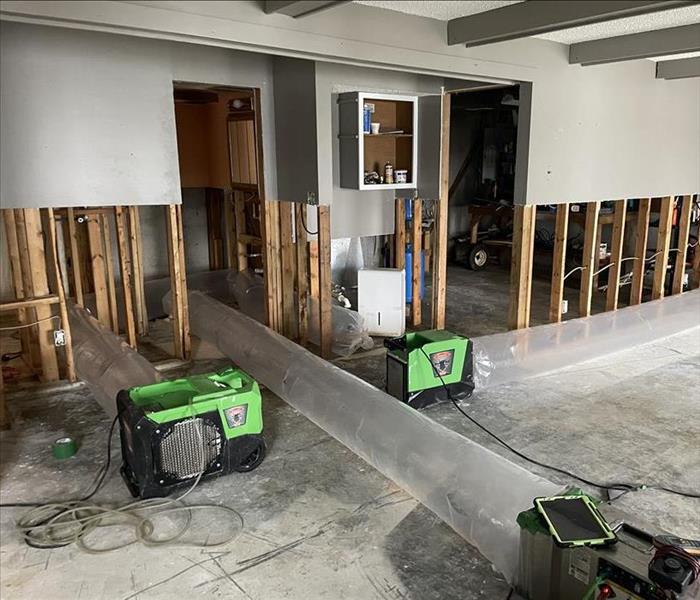 By knowing the differences between them, you can better develop a storm damage plan and protect your property from potential water damage.
By knowing the differences between them, you can better develop a storm damage plan and protect your property from potential water damage.
When it comes to dealing with storm emergencies, understanding the different types of flooding is crucial for effective preparation and response. Flash floods and river floods are two common types of flooding, each with their unique characteristics and risks. By knowing the differences between them, you can better develop a storm damage plan and protect your property from potential water damage.
Flash Floods
Flash floods are rapid and intense floods that can occur within minutes or hours of heavy rainfall or the sudden release of pent-up water. These floods are characterized by their swiftness and unpredictability, making them highly dangerous. Flash floods often result in a sudden surge of water that can quickly engulf roads, homes, and other structures. They are particularly common in urban areas with impermeable surfaces that prevent water from being absorbed into the ground.
One of the key challenges of flash floods is the lack of warning time. Due to their rapid onset, it can be difficult to evacuate or take preventive measures in time. As a result, flash flooding poses a significant risk to life and property. Developing an emergency response plan that includes evacuation routes and early warning systems is crucial when living in an area prone to flash floods.
River Flooding
River flooding, on the other hand, is a slower type of flooding that occurs when rivers or other bodies of water exceed their capacity and overflow onto surrounding land. Unlike flash floods, river flooding typically develops over days or even weeks, giving residents more time to prepare and respond. River flooding is often caused by persistent heavy rainfall, snowmelt, or a combination of both.
One of the main challenges of river flooding is its potential for long-lasting devastation. Floodwaters can linger for an extended period, leading to prolonged disruptions and damage to homes and infrastructure. Living in a flood-prone area requires having a comprehensive storm damage plan that includes measures such as building levees, and floodwalls, and maintaining proper insurance coverage.
Key Differences
The primary difference between flash floods and river flooding lies in their onset and duration. Flash floods are sudden and short-lived, while river flooding is gradual and long-lasting. Understanding the distinctions between these two types of flooding is essential for effective mitigation and response strategies.
In conclusion, knowing the differences between flash floods and river flooding is crucial for developing a comprehensive storm emergency plan. By being aware of the risks associated with each type of flooding, homeowners and communities can better prepare for potential water damage and take proactive measures to safeguard their property. Remember to stay informed, have a plan in place, and work with professionals like SERVPRO® to minimize the impact of flooding on your home or business.
Essential Tips for Preventing Candle Fires in Your Home
4/17/2024 (Permalink)
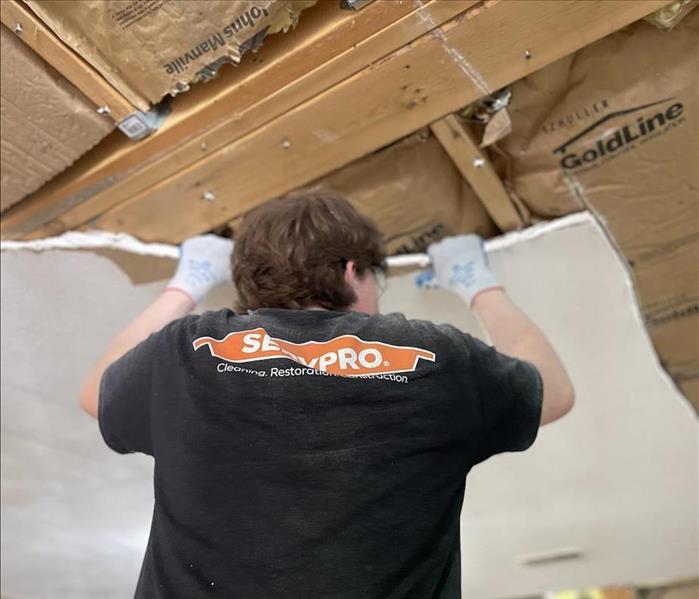 In this blog, we will explore tips for preventing candle fires and ensuring the safety of your home.
In this blog, we will explore tips for preventing candle fires and ensuring the safety of your home.
Candles add a warm and cozy ambiance to any home, but if not used properly, they can pose a significant fire hazard. Candle fires can result in devastating fire damage and the need for extensive fire remediation and smoke damage restoration. By following some essential safety precautions, you can enjoy the beauty of candles in your home while minimizing the risk of fire. In this blog, we will explore tips for preventing candle fires and ensuring the safety of your home.
Never Leave Unattended Candles
One of the most critical rules for preventing candle fires is to never leave a lit candle unattended. Always extinguish candles before leaving the room or going to sleep. A momentary distraction or a draft of air can quickly lead to a dangerous fire.
Keep Candles Away from Flammable Materials
Ensure that candles are placed in a sturdy candle holder on a stable surface. Keep them away from flammable materials such as curtains, bedding, paper, or furniture. Maintaining a minimum distance of one foot between a lit candle and any flammable item is a recommended safety practice.
Use Proper Candle Holders
When using candles, choose appropriate candle holders that are non-combustible and can securely hold the candle. Opt for holders that fully surround the flame and are made of materials like glass, ceramic, or metal. Avoid using plastic or wooden holders, as they can easily catch fire.
Place Candles in Draft-Free Areas
Avoid placing candles in drafty areas or near air vents. Drafts can cause candles to tip over or flare up unexpectedly, increasing the risk of fire. Keep candles away from windows, ceiling fans, and areas with heavy foot traffic.
Trim Candle Wicks
Before lighting a candle, trim the wick to approximately ¼ inch. Long or crooked wicks can cause uneven burning and excessive flame height, increasing the risk of accidents. Properly trimmed wicks can help ensure a more controlled and safer burning experience.
Avoid Overcrowding
When using multiple candles, ensure they are adequately spaced apart to prevent overheating and accidental contact between flames. Overcrowding candles can lead to rapid heat buildup, melting nearby surfaces, and potentially causing a fire.
Extinguish Candles Properly
When extinguishing a candle, use a snuffer or gently blow out the flame. Avoid using water to put out candles, as it can cause hot wax to splatter and can potentially lead to a fire. Ensure that the candle is completely extinguished and the wick is no longer glowing before leaving the area.
Consider Alternatives
If you are concerned about fire hazards or prefer a low-maintenance option, consider using flameless LED candles. These candles mimic the appearance of real candles without the risk of fire. They are safe to use around children and pets and eliminate the need for fire damage restoration and cleanup.
Candles can add warmth and ambiance to your home but must be used with caution. By following these essential tips for preventing candle fires, you can enjoy the beauty of candles while minimizing the risk of fire damage. Remember to always remain vigilant and take the necessary precautions to ensure the safety of your home and loved ones. In the event of a candle fire or any fire-related incident, seek professional assistance for fire remediation and smoke damage restoration from experts like SERVPRO® who can help restore your home to its pre-damage condition.




 24/7 Emergency Service
24/7 Emergency Service